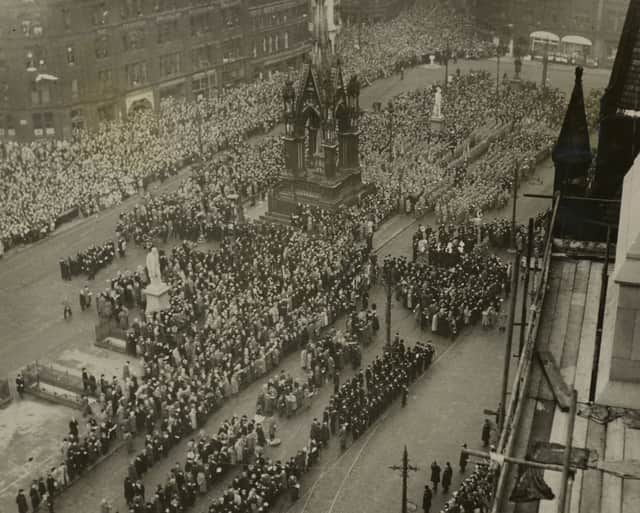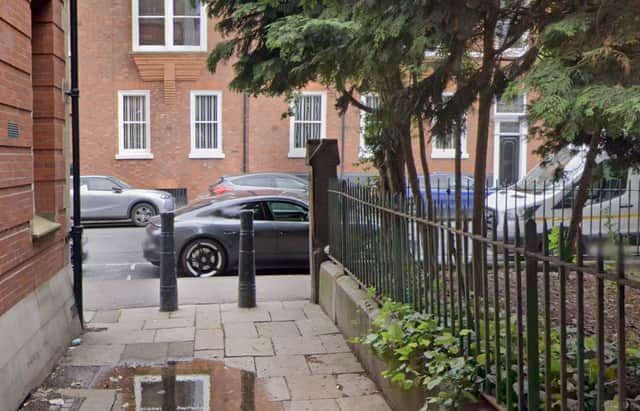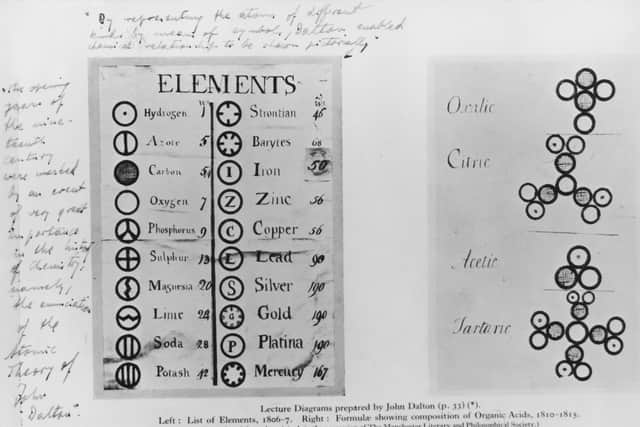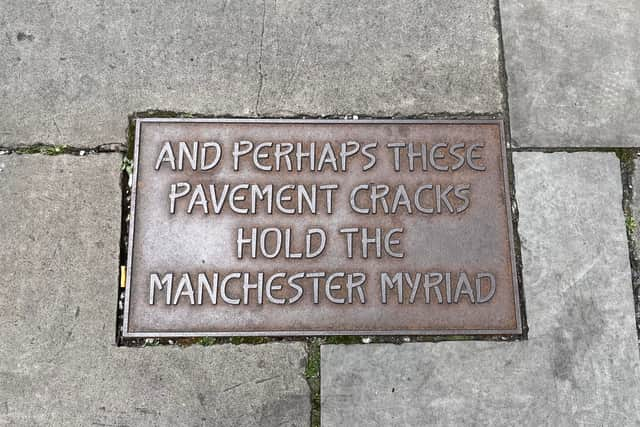Manchester street names: The true stories behind the city’s famous streets and places
and live on Freeview channel 276
You can learn a lot about a city’s history by looking at its street names and Manchester is full of interesting examples.
They are reminders of Manchester's notable people, events and landmarks. And although they shaped the city we know and love today, the real stories behind these place names are often lost to the average Mancunian.
Advertisement
Hide AdAdvertisement
Hide AdTo find out more about what Manchester’s street names can tell us, we went along to Dukinfield Library, where the Tameside Library Club met for a talk on the topic by local Blue Badge tour guide Ray Hoerty. Here’s what we learned.
Manchester street names
Albert Square – Many people think that Albert Square and Town Hall go hand-in-hand, but the square predates the Town Hall slightly. It was purchased initially as a space for monuments. The statue of Prince Albert there was the first to be built in the whole country, beating London by about nine months.


Anita Street – A lot of people in Manchester are familiar with this story, but for those who are not, Anita Street was originally called Sanitary Street. While this may seem like an unfortunate name, it was really a sign of great pride.
When the row of terraces was built in 1897, most people were living in squalor. For example, the neighbourhood known as Little Ireland (today it is the area off Oxford Road where the the Thirsty Scholar and Salisbury pubs are located), had around 40,000 people living in 200 houses, mostly Irish people fleeing their homeland due to the potato famine. Most had to share an outdoor toilet with around 50 other people. Sanitary Street was one of the city’s first social housing projects which aimed to change all of this. Each house had its own toilet and running water.
Advertisement
Hide AdAdvertisement
Hide AdBy the 1980s, residents no longer saw indoor plumbing as something to be proud of. They began to complain about the street’s name and petitioned the council to change it. They did so by simply removing some letters from the street sign.
Artillery Street – This was the site from which Charles Edward Stuart, aka Bonnie Prince Charlie, the young pretender, tried to seize control of Manchester in 1745, when this area was open fields. What is now Artillery Street was the gun park, hence the name. If you look at the nearby bollards on Byrom Street leading down the side of St. John’s Garden, you’ll notice that they are actually repurposed canons.


Atkinson Street – This street was formerly known as Cupid’s Alley but was renamed in the Victorian era due to the puritanical sensibilities of the time.
Aytoun Street and Minshull Street – Today, most Mancunians know these city centre streets as the home of the Crown Court, but there’s an interesting love story (of sorts) behind the names.
Advertisement
Hide AdAdvertisement
Hide AdRoger Aytoun, also known as Spanking Roger, was a Scottish soldier passing through Manchester in the mid 18th century. With his 6 '4 stature and handsome good looks, the 29-year-old soon caught the attention of wealthy widow and landowner Barbara Minshull, who was 65 at the time. The unlikely pair were married within weeks – some say he was so drunk during the ceremony that he could not stand unassisted.
He used some of his new found wealth to raise a volunteer regiment that went on to fight in the Great Siege of Gibraltar, but squandered most of it on gambling and drinking. His nickname Spanking Roger refers to his love of fighting, which he used to recruit men to his regiment. He would challenge them to a fight and if they lost, they had to enlist.
Balloon Street – James Sadler, the first English Aeronaut, was the first man to fly out of Manchester in a hot air balloon in 1785. He took off from a garden on what is now Balloon Street attracting large crowds. This would have been a momentous occasion at the time. He even sold tickets for the opportunity to stand in the basket while it was on the ground.
Deansgate – You would be wrong to assume that the ‘dean’ in Deansgate had something to do with the fact Manchester Cathedral is located at the end of it. In fact, ‘dean’ most likely derives from ‘Dane’ and the route taken by Viking invaders.
Advertisement
Hide AdAdvertisement
Hide AdHanging Ditch – This is one of the oldest surviving parts of the city, dating back to 1421. The closest you can get to it today is the basement of the Cathedral visitors’ centre The name conjures images of dark mediaeval executions, but that is not the case. Hanging Ditch, or Hanging Bridge, was a defensive structure and ‘hanging’ refers to the drawbridge.


John Dalton Street – John Dalton was a famous chemist, born in Cumbria but lived and worked in Manchester. He was famous for a number of scientific discoveries, including the first research into colour blindness. However, he was most famous for his work in atomic theory, the basis of modern chemistry and physics.
Piccadilly Gardens – Piccadilly is obviously named after the famous London thoroughfare, however, the area’s original name is much more interesting. Up to the 18th century, the area was known as Daub Holes as it was a massive clay pit, an important material in construction at the time. In the 1700s, the Lord of the Manor of Manchester built an infirmary and asylum on the site, which stood for around 100 years before being demolished. When the area was transformed into a public garden in the 20th century, it was designed as a sunken garden as it was easier than filling in the old clay pit.
Roman Entry – Manchester was a Roman settlement, but this has nothing to do with how this Northern Quarter alley got its name. It refers to the Roman Catholic church and the place where believers would meet for secret masses when Catholicism was outlawed. Following the dissolution of the monasteries in 1536-41, Catholicism was made illegal and not legalised again until 1791.


Advertisement
Hide AdAdvertisement
Hide AdTib Street – This Northern Quarter street is named after the River Tib, which the street is built on top of. The river was culverted around 1783 due to constant flooding. You can walk on top of the River Tib if you follow the metal plaques with lines from Lemn Sisssay's poem.
Whitworth Street – The street connecting Oxford Road station to Piccadilly, or London Road station as it was originally called, was named after pioneering engineer, Joseph Whitworth, who was born in Stockport in 1803. One of his most famous contributions to society was the standardisation of sizes for nuts, bolts and screws.
